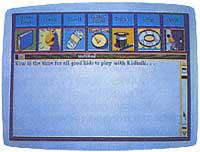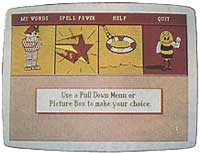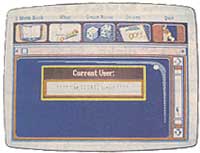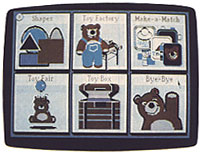ST Product News
ST Reviews
BALANCE OF POWER
Mindscape
3444 Dundee Rd.
Northbrook, IL 60062
(312) 480-7667
$44.95
Reviewed by Harvey Bernstein
The sweat broke out on my forehead as I anxiously awaited the Soviet response. Having increased military aid to the Indonesian government to four billion dollars in order to prevent a Communist takeover, I've withstood several challenges to my action from the U.S.S.R. Now, however, I've gone to DefCon 3 and placed our forces on a world-wide alert. If the Russians don't back down now, there is an excellent chance nuclear war will follow, surely meaning an end to the game (not to mention the world!). Fortunately, they "blink," and take their protest to the United Nations. I guess they didn't want to go to war over Indonesia any more than I, but my increase in prestige worldwide gives me a good lead in the game.
The above scenario is but a mere shadow of what playing Balance of Power is like. If there was ever a game designed for the new generation of 16-bit home computers, this is the one. No, there is no animation or fancy graphics. In fact, author Chris Crawford has gone out of his way to avoid a magnificent animated end-of-the-world display. Balance of Power, however, is one of the finest examples of artificial intelligence implemented in a computer game to date, and the most challenging and nerve-racking keyboard encounter I've had, including all my years as a text-adventure player.
The game is not easy to summarize in a short review, but I'll try. You take the role of President of the United States (or Premier of the U.S.S.R.) for an eight-year span. As leader of your country, it is your responsibility to gain greater worldwide prestige and acclaim than your adversary. By using the resources at your command, including military and economic aid, troop placements, diplomatic pressure, and even the CIA (or KGB), you do everything in your power to support friendly governments, topple unfriendly ones, and perhaps persuade those on the fence to see things your way. Of course, your opponent will be doing the same.
The real challenge of the game comes in two areas. First of all, your realization that every action determines how the rest of the world looks at you, whether or not that action directly affects them. For instance, you may have a conventional defense treaty with an ally, such as Indonesia in the example above. By allowing that government to fall, every single one of your allies will reconsider their relationship with you and start looking much more favorably upon your opponent, resulting in a considerable loss of prestige (and appropriate gain by the other side).
The most challenging aspect of Balance of Power, however, and the real arena in which the game is won and lost is that of crisis management. Either side can challenge an action of the other on the battlefield of international diplomacy. If the challenged party feels strongly enough about what he is doing, he can reject the challenge. The action can be rechallenged, refused again, each level raising the stakes (prestige value) higher. Starting with a backchannel discussion (considered to be a quiet chat behind closed doors), and commencing through a diplomatic crises, and several levels of military crises, a challenge can result in the winning or losing of the game, depending on who loses his nerve. The twist is that the more often you head recklessly into a military crises, the more likely it is that the next one will end in an accidental nuclear war, bringing the game to an end and causing both sides to lose.
Thus, you cannot do whatever you want (sending 20,000 troops into Cuba, for instance) without invoking the wrath of your opponent. You must make every move with the consideration of whether or not you will be challenged, and how far you are willing to go. Conversely, you need to carefully scrutinize your opponent's moves, determining which parts of the world he feels stongly enough to go to the mat over, and in which he is simply flexing his muscle. The one game I completed and won required keeping copious notes on how my opponent reacted to my most important actions.
One of the greatest aspects of computer games is that they allow you to live dangerous or thrilling adventures vicariously. As I mentioned earlier, the graphics in Balance of Power are nothing to write home about, but if you want to lead the life of a Machiavellian power-hungry megalomaniac, then this is the game for you.
FIRST SHAPES
KID TALK
MATH TALK
SPELLER BEE
First Byte
distributed by Electronic Arts
1820 Gateway Drive
San Mateo, CA 94404
(415) 571-7171
$49.95 each
Reviewed by Sol Guber




First Byte has brought out a set of educational programs for the Atari ST—First Shapes, Kid Talk, Math Talk and Speller Bee. Each of the programs can talk to you using a built-in software speech synthesizer. The speaking aspect is used to help teach young children about shapes, math and spelling. The programs are effective teaching tools, but some of them utilize the speech synthesizer more effectively than others.
There is a great deal of similarity in these four programs. When the programs start, they all say the name of the program and the company, First Byte. They also all use a specific character to do the talking. First Shapes has Ted E. Bear. Kid Talk has a parrot, Speller Bee has the Bee, and First Math uses Professor Matt A. Matics. You can understand all of the characters, but the most intelligible is Ted E. Bear, since he says the fewest number of different words. The speech synthesizer helps make the learning experience more enjoyable and probably increases the time a child will spend at these games. The games also allow you to customize them for an individual child. You can add complements and praise as well as a child's name into a file, which you can then add to future games.
All of the programs are structured in a similar manner. They use only medium resolution, which limits your colors to four, but this is not particularly offensive. The programs use menus with their on-screen pictures, activated by the mouse controls for choosing the various options in each program. The mouse control makes the programs easier for young children to use. Also, each program has many sections to it, so that they will hold a child's interest longer. The sections are divided into parts for learning and parts where you play games, and the education aspects are not so obvious.
My nine-year-old daughter's favorite game is First Shapes, even though this is for younger children. It "Introduces Young Children to Geometric Shapes" and teaches you about ovals, circles, squares, triangles, and big and little. There are many sections to this program. In the first, Ted E. Bear shows you the shape and says the word. Once you can recognize the shapes, you get to play three little games with Ted. You can play any of the games by picking them from the menu, which also has pictures for each of the games.
Math Talk is my daughter's second favorite program. As it states, it's "a powerful learning tool for mathematics mastery" and gives you drills in addition, subtraction, multiplication and division. This program is for older children. It is very effective and nonjudgmental when you make a mistake. If you make a mistake more than once, the professor will come and remind you how to do the problem. It also allows children to do their own problems by setting up a math book, then quizzes them until they can solve them correctly.
Besides the simple drills, there are also two games in this program, Table Talk and Mystery Number. Table Talk lets children fill out the math tables by giving them many problems. It asks the child to guess out how long it will take him or her to finish the 100 problems. If the child thinks that the 100 problems are too many, he or she can quit in the middle and the program will issue a score. Since this is a timed test, it helps a child calculate faster. Mystery Number shows an equation with one of the numbers missing. The child has to determine the number. You can make the game easy or difficult. This is another method of learning the various arithmetic operations.
Kid Talk is a word processor program that says the letters, words or sentences as you type them in. This is a real word processor for children since it has many of the commands that a full-blown word processor has. It allows for printing, deleting, and for movement of blocks of words as well as loading and saving data. It is very easy to learn all the operations. The program is somewhat slow (you can out-type it), but for a child who is not a touch-typist, this will not be noticeable.
Speller Bee is the last, and unfortunately, least-effective program. As the title suggests, it teaches you how to spell. It is often difficult to really understand the words in this one. To help you, the word list it uses is first shown on the screen and then it pronounces the words. Speller Bee comes with word lists of various difficulties, and you can also put your own spelling words into the game for drills.
There are three additional games with this program to help teach spelling. The first game is a "scramble" one—a word is shown on the screen, letters rearranged, and you have to guess it and type the correct spelling. The program will give you clues, like showing the word list or saying the word. There is also a detective game where the word is shown with letters missing and you have to guess it. There is also a word search game that puts the spelling words in the square. This is the best way for learning spelling, since you just look at the words so long that you have to learn them!
There are many good points to all of these programs. There are tours in the program for both parents and children, and the mouse controls make the programs easy to use. All you have to do is push a button on the screen with the mouse to perform actions. First Shapes is extremely effective for young children. It contains many cute touches and allows the most customization of the programs. You can also save information on the disk so the program will remember information about each child. Each program comes with a 15-25 page manual that explains the programs well, and gives more information about the customizing features. There is also a section on the educational considerations of each program.
All of these programs are easy to recommend both for using the ST effectively, and the educational considerations. The spelling bee program is the poorest due to the fact that slight mispronunciations cause a word to be difficult to discern, but the other three programs are effective and fun for children to use. Unfortunately the programs are strongly copy-protected, making them difficult to run off a hard disk.